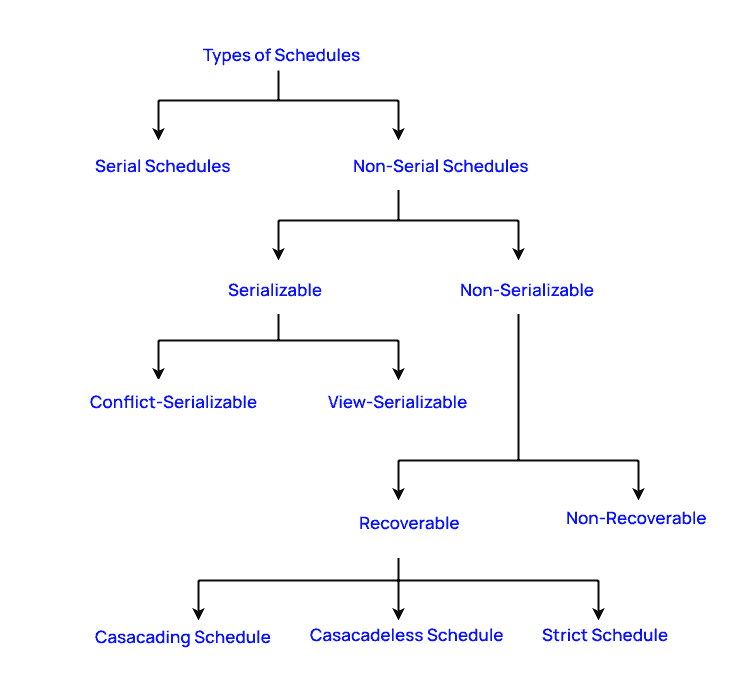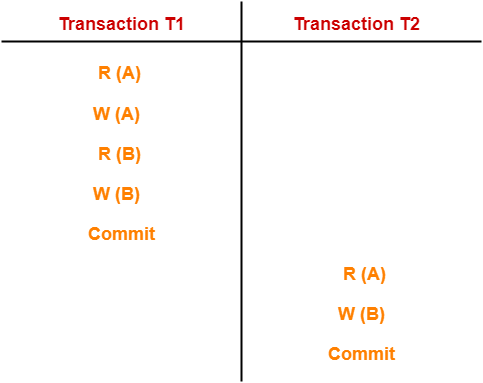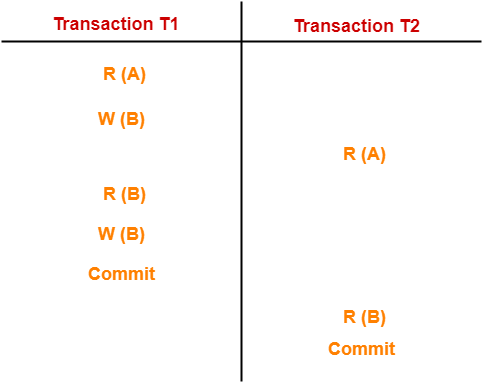Table of Contents
As transactions are set of instructions and these instructions perform operations on the database. When multiple transactions are executing concurrently in an interleaved fashion, then the order of execution of operations from the various transactions is known as a schedule. (In short, it is a sequence of operations.)
Types of Schedule

1. Serial Schedule
The serial schedule is a type of schedule where transactions can begin only after the completion of previous transaction i.e. one after another. In the serial schedule, when the first transaction completes its cycle, then the next transaction is executed.
For example:

In this schedule,
- There are two transactions T1 and T2 executing serially one after the other.
- Transaction T1 executes first.
- After T1 completes its execution, transaction T2 executes.
- So, this schedule is an example of a Serial Schedule.
2.Non-serial Schedule
The non-serial schedule is a type of schedule where multiple transactions execute concurrently.Operations of all the transactions are inter leaved or mixed with each other.

In this schedule,
- There are two transactions T1 and T2 executing concurrently.
- The operations of T1 and T2 are interleaved.
- So, this schedule is an example of a Non-Serial Schedule.